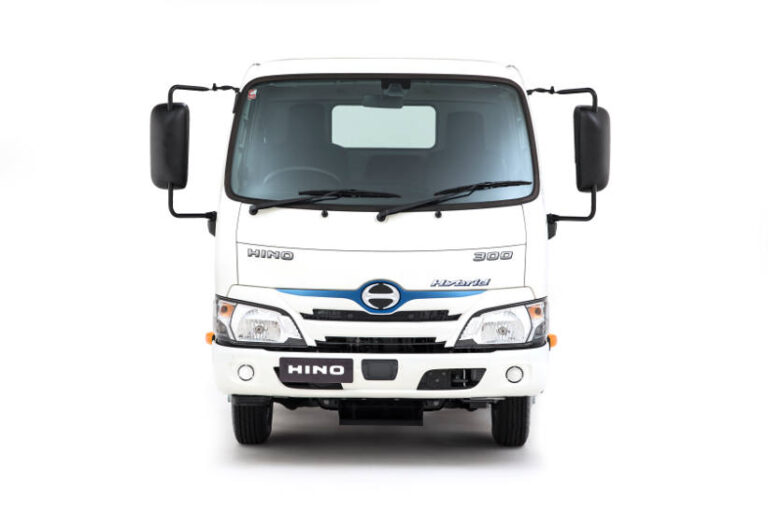History will record 2021 as the year Australians became interested in electric vehicles, and the year the businesses started looking at emission reductions seriously.
In 2022, with diesel prices hitting record highs, Hino Australia has announced a renewed focus on the 300 Series Hybrid models to help customers with the right applications take steps to reduce their emissions.
“While we have been ahead of the curve by offering the Hybrid for the past 15 years, there is more we can do to present it as a legitimate solution,” said Richard Emery, Vice President of Brand and Franchise Development for Hino Australia.
“Our parent company, the Toyota Group is considered the world leader in hybrid technology both here and globally, which provides us an advantage in the innovation and implementation of hybrid technology,” continued Mr Emery.
“When we launched the current version of 300 Series Hybrid models, we anticipated that they could reduce a customer’s operational costs by up to 20% which also directly minimises their impact on the environment with an equal reduction in CO2 emissions.
“Recently, we have undertaken further real-world customer trials involving a 300 Series 616 Hybrid operating in a refrigerated delivery application which resulted in a 22% improvement in fuel efficiency compared to the conventional diesel engine model.
“It also saw an approximate 50% reduction in idling time.
“For this customer, this is a potential saving of up to 5.1 tonnes of CO2 emissions and over $4,000 per annum in fuel savings per truck.
“The current market conditions combined with our customers’ strong focus on reducing their CO2 footprint has seen us take record orders from new and existing Hybrid customers such as councils, and fleet customers such as Altus Traffic.
“A 300 Series Hybrid currently has a lower operational CO2 output and environmental impact than a battery electric truck plugged into the Australian grid.
“It is a perfect solution for customers to immediately reduce their fleet’s CO2 levels – it is the ideal stepping stone for many fleets on the road to net zero emission and provides a real window of opportunity for Hino customers, particularly during the next three to five years.
“The 300 Series Hybrid is the only light-duty hybrid electric-diesel truck in Australia – it has no recharging requirements or range limitations, and with over 650 Hino Hybrid trucks already in operation on Australian roads, it has a proven track record of reliability, fuel savings and emissions reduction,” concluded Mr Emery.
Hino Australia’s Department Manager – Product Strategy Daniel Petrovski added, “Hybrid customers also benefit from a reduction in maintenance costs as the electric motor replaces the diesel engine’s starter motor and alternator, while regenerative braking saves brake pads,” he said.
Hybrid models are available across the Hino 300 Series range from the 616 Standard and Wide Cab car-licenced models through to the 716 Wide Cab and the 916 Wide Cab, which has a maximum Gross Vehicle Mass (GVM) of 8.5 tonne.
“The extensive model line-up and payload options are a direct result of the unique operational requirements of our multitude of customers,” said Mr Petrovski.
Applications for the Hybrids are varied and range from dry van and refrigerated delivery trucks through to city and regional council vocational applications such as rear loader waste, parks and garden service, and tippers.
“In 2020, we launched an updated Hybrid featuring a series of changes to the hybrid system aimed at improving fuel efficiency and reducing emissions,” continued Mr Petrovski.
The Hybrid uses a parallel electric diesel design and a Toyota Group nickel metal hydride battery, which has been used in over 15 million hybrid vehicles worldwide.






